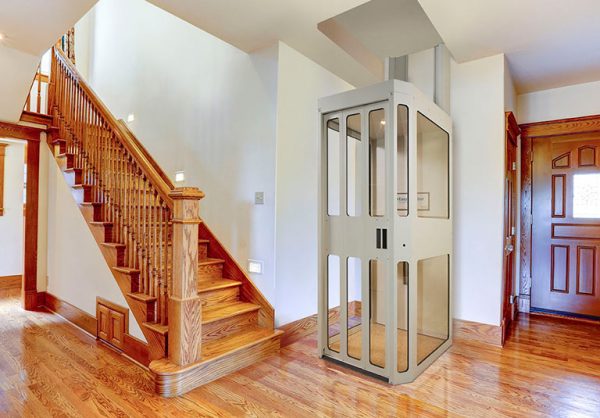If you have a challenge with accessibility and mobility in your home, residential elevators can be a great solution. Residential elevators are becoming more common in homes thanks largely to an aging population that wants to remain in their own homes rather than move to a retirement community.
Residential elevators make moving between levels in a home simpler and safer. Home elevators can also be used for convenience and add value and a great aesthetic to a home. However, there are a few things to consider before installing an elevator in your home.
1. Size & Space
While the footprint of residential elevators has shrunk dramatically in recent years, many homeowners fail to recognize that an elevator requires a significant amount of space to be installed. The building of an elevator shaft can restrict the elevator’s use to specific areas of the house or prevent the installation of a traditional elevator.
However, elevators aren’t all the same. In fact, you can personalize your home elevator to match your home’s style and décor. The door, trim, and flooring are all customizable. A residential elevator can fit in so seamlessly with the rest of your home that the call button is the only thing that sets it apart.
2. Construction Time
A home elevator installation entails some fairly invasive construction work that can result in more time and money owing to unforeseen complications. If you decide to install an elevator in your house, you may expect weeks of building noise, dust, and crew workers in your living space. A through-the-floor elevator can be installed in your home in as little as 2-4 weeks, an elevator shaft in 4-8 weeks, and an outside elevator, which is essentially a home addition, in 3-4 months.
3. Cost
The price of a home elevator varies greatly. The majority of residential elevators cost between $30,000 and $40,000. Some basic systems, on the other hand, can cost as little as $30,000, while other specialized applications might cost well over $100,000. We will work with you one-on-one to identify the system that works best for your specific home and budget, depending on the application, system, and desired level of finish and personalization.
4. Location
Where in your home should you install your elevator? It all relies on your home’s design. If your home was built with stacked closets, converting them into a hoistway may be the most cost-effective and time-saving alternative. There are other viable sites for your elevator if you don’t have stacked closets in your home. It all depends on the design of your property. Converting stacked closets into a hoistway may be the most cost-effective and time-saving option if your home was designed with them. If you don’t have stacked closets in your home, there are other options for your elevator.
5. Design Options
Elevators can be tailored to fit almost any design aesthetic. Whether you want to blend in or stand out, a home elevator can be designed to fit your style like Ashley’s furniture. Interior options for your elevator walls can include wood finishes, panel details, and factory stains and finishes. You can also customize your fixtures and can be manufactured from a variety of metals and finished with different techniques.
6. Type of Elevator
There are various different types of elevators to choose from. You can choose a Shaftless home elevator (also known as through-the-floor elevators) which are designed to go in tight spaces with minimal construction. These space-saving elevators are available in a range of variants and can be customized to meet your specific requirements. There’s also a Pneumatic Vacuum Elevator (PVE) which is a premium alternative. Their stunning design blends with current pneumatic vacuum technology to provide homeowners with an elevated ride experience that includes panoramic vistas while in use.
A house elevator increases the value of your home and makes it easier for you and other family members to navigate. Be sure to consider all of the above information before making a purchasing decision!

